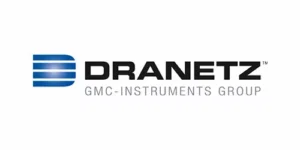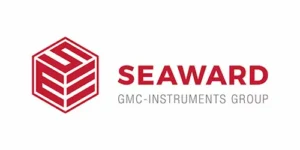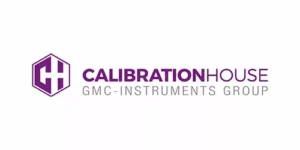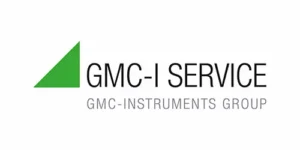
During the period of digitization, measurements are carried out to test DSL connections to ensure that connections comply with specified standard values and thus lie within their tolerance range. In order to be able to measure these values accurately, a calibrated measuring technique is required.
But what does calibrated measurement technology mean? Why are measuring instruments subject to tolerances? When should tolerances be adjusted?
1 What tolerances do measuring instruments have?
When choosing the measuring equipment, it is very important to have a look at the technical documentation. The upcoming measurement should be performed in the best possible way and should be within the system limits of a measuring instrument. The range of measurement uncertainties or measurement tolerances is often the first indicator of the quality of a measuring instrument.
1.1 Why do measuring instruments have measuring inaccuracies?
All measuring instruments have tolerances or are subject to them due to their design. As a rule, this cannot be avoided either. Accordingly, tolerances lead to deviating measurement results. How far tolerances may deviate in each measuring range is specified by each manufacturer in their technical descriptions of measuring instruments. Most of the time, this is done by giving an approximate percentage.
Measurement inaccuracies on measuring devices depend, as with tolerances, on the design and use of components. Measurement inaccuracies are errors or deviations that often cannot be adjusted and can only be reduced by multiple measurements. However, large measurement inaccuracies can also be caused by external disturbances or defects.
1.2 What is meant by an adjustment?
Adjustment is the process of setting or adjusting a measuring instrument, in such a way that measurement deviations from the nominal value are kept to a minimum and are within the instrument specifications. In doing so, the measuring device is changed permanently.
Furthermore, adjustment is often very closely related to calibration. The aim of both processes is to detect and document deviations. If the display of a measuring device or the output of a control unit is outside the permissible tolerances during calibration, the device must be adjusted until the measured values are within the permissible tolerances.
2 What does traceability mean?
Traceability is a fundamental concept in calibration. If a calibration performed by a manufacturer of a measuring instrument would not be traceable, then it would be unclear whether the calibration performed is correct at all. Traceability is the property of a result rather than an instrument and describes the calibration chain of the instruments used for calibration. If a chain link should break within this chain, all rows built up underneath it are no longer traceable. Traceability is established on the basis of SI units (International System of Units).
2.1 Why does a measuring instrument have to be calibrated?
The necessity of calibrating a measuring instrument and thus the frequency of recalibration at certain time intervals result from the importance of limiting measurement errors or measurement inaccuracies. Calibration thus provides the certainty that the measuring instrument is functioning properly and safely.
What does calibration mean?
Calibration is a measurement process to determine whether a measuring instrument has deviations from another measuring instrument or from a material measure. These possible deviations are then documented. Clear tolerance ranges are defined in advance in the measurement results and readjusted in case of deviations.
Calibration includes the following steps, for example:
First of all, the ambient conditions are determined in a measuring process. Subsequently, a model for the evaluation of the calibration and the uncertainties is created. Then the calibration is carried out. Finally, the measurement results are documented with existing deviations and measurement uncertainties. A calibration certificate is then generated from this. This certificate and the calibration usually correspond to ISO9001.
Calibration is a determination and documentation of deviations of the display of a measuring instrument from the correct value of the measured variable. Calibration accordingly, under previously defined conditions, establishes a relationship between the reading of one measuring instrument and the originally determined standards as well as the displayed tolerances, which are clearly defined.
In general it should be noted that the calibration is a snapshot (actual state at the time of calibration). Metrological changes or readjustments are not taken into account. If adjustments are necessary, recalibration must be carried out.
2.2 What is an accredited calibration?
Accredited calibration enables a measuring laboratory or an independent company to subsequently carry out a calibration according to ISO standards within specified tolerances or adjustments. Accreditation of a measurement laboratory in Germany is performed by the DAkkS (German Accreditation Body) and complies with ISO/IEC17025.
In case of an accredited calibration, the calibration laboratories are subject to surveillance by the accreditation body. In contrast, in case of a “regular” ISO calibration, traceability is subject to voluntary commitment of the calibration laboratory.
2.3 What is calibration?
Calibration is a test of measuring instruments prescribed by law, in which compliance with underlying legal metrology regulations and decrees, in particular with underlying calibration error limits, is specified in accordance with the German Verification Act. Calibration is a sovereign task, which is carried out by verification offices or recognised testing laboratories. In Germany the supervision, as well as the instructions on how to do this, is carried out in Germany by the Physical Technical Federal Institute.
Summary
The use of a calibrated measuring instrument is advisable for production or reproduction of usable measurement results. Regular adjustment and calibration ensures that the readout value is optimally adapted to the measured value. With the calibration certificate, the reading can be correlated with measurement uncertainty and thus the measurement result can be displayed. The latter is traceable through SI units.


















